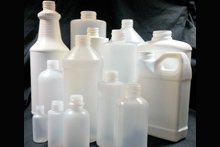Weight Reduction in Blow Moulding Containers
The more and more companies try to make light-weight containers by reducing the weight of containers. The main challenge is to engineers have to design light-weight container without losing aesthetic of container, impact performance, top load requirement and most important stability. The research took a long time to make perfect light-weight containers. For last few years’ manufacturers of blow moulded containers try to reduce the weight of the traditional design of dairy, water and juice. When reducing the weight of container the main factor to be considered is gram weight.

The reducing process is very difficult as the researchers have to starting with an existing design or they have to make a new design. The process is start with analyzing the current weight of the container and other factors like volume capacity, top load, and drop impact with wall mapping of the entire container. The problems has found after the destruct test. If there is a new design of the container there are two steps to follow. One is passing through FEA (Finite Element Analysis) capability. With this test researches find a weak portion that needs to be correct. The other factor is heat transfer which has to be considering as it is cooled down the mould.
After collecting the data the engineers have to research previous data to apply the new attributes which is add to reduction design. These data consists of radius, angles, ribs and the texture of the main part. If the bottle has a handle, the design of the handle is have to be strong, comfortable and have a easy blow to make the whole process easy. The data is collected from a lab where it is tested. There must be the latest equipment which also has a top load tester, drop impact chamber, top wave vision system, vibration stand, and Magna Mike and altitude chamber. These equipments help in the process to get the best design.
The method is how much you saved with new less weight design. First, take the gram weight to save per container and then multiply by a number of containers made in one week. Convert the grams in KGs or pounds, and then multiply by resin cost after that you will get your weekly savings.
